Bento
Bento is a data-driven tool that helps franchise owners optimize store layouts and product/service portfolios by leveraging location insights. It integrates spatial data to improve space efficiency, inventory management, and service offerings in metropolitan environments. The goal is to increase profitability and streamline decision-making processes for franchises operating in urban areas with diverse customer behavior.
Product Designer
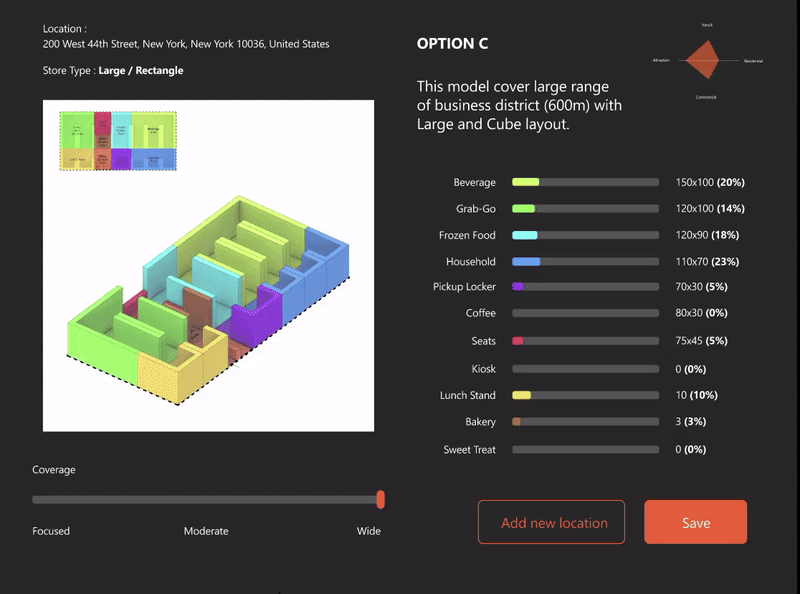
Problem Statement
Challenge
Franchise owners face significant challenges when expanding in metropolitan areas, such as:
1. Rising rents and limited store space.
2. Uniformity across franchise locations, limiting the ability to adapt to local market demands.
3. Overstock issues that increase operational costs and reduce profitability.
4. Difficulties in tailoring services to local insights.
Goal
Develop a product to find the most profitable portfolio of products and services in each franchise store.
.jpg)
Research & Insights
User Research & Competitive Analysis result:
Conducted interviews with retail store owners, customers, and industry experts to understand pain points and opportunities. Then analyzed existing retail solutions to identify gaps and opportunities for innovation.
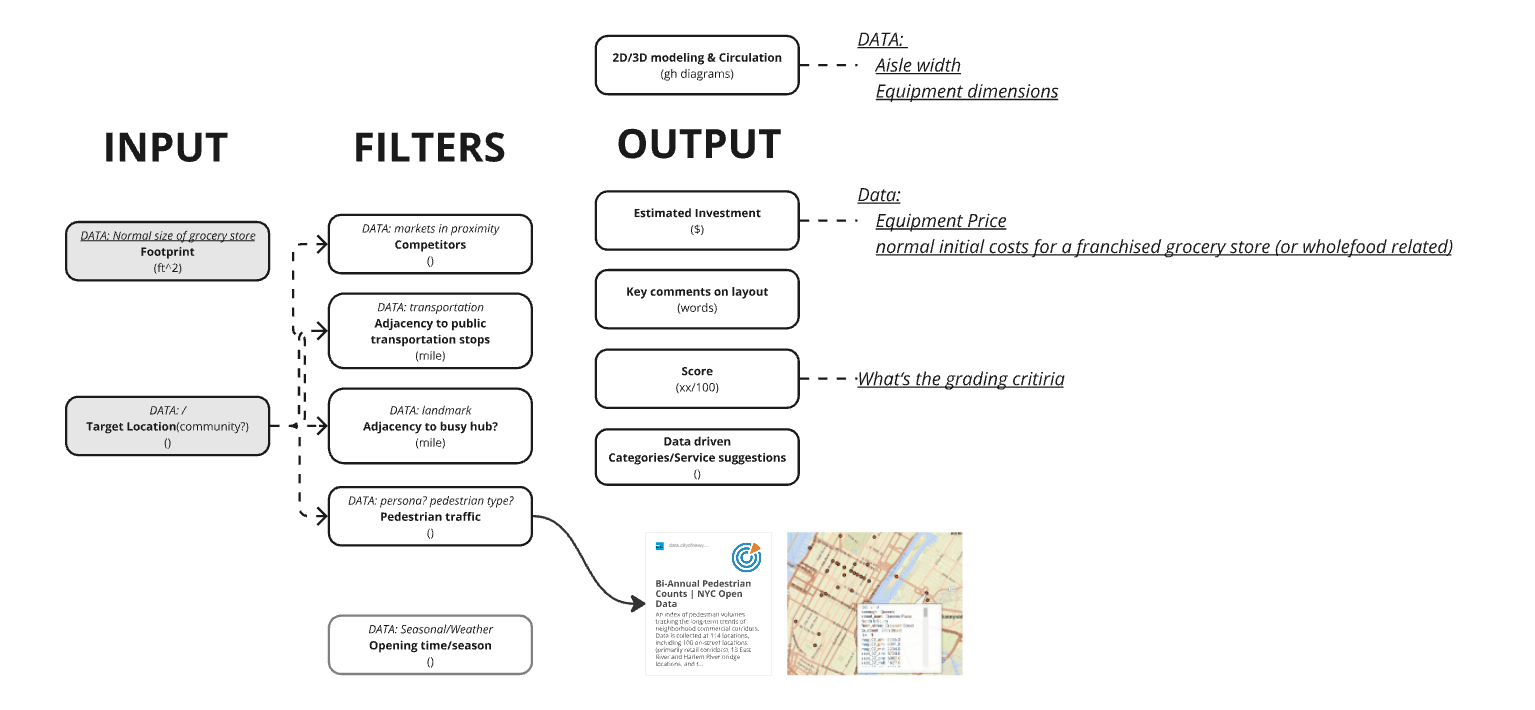
Final Blueprint:
1. From a Conceptual Data Flow (Sketch) → To a Decision-Support System (MVP).
2. Added structured filters, investment analysis, and scoring criteria.
3. Enhanced competitor analysis, traffic patterns, and seasonal effects.
4. Integrated spatial modeling for practical layout optimization.
.jpg)
Key Features
Bento’s methodology revolves around analyzing spatial location data and using it to generate suggestions for store layouts and service portfolios.
1. Data Processing
1. 1 MapBox Data Input: The tool collects and processes spatial data such as transit, tourist, commercial, and residential attributes.
%20(1).gif)
1.2 Weights & Matrix: These attributes are assigned a weighted value (1–4) based on their relevance to the store’s location. Data is translated into a matrix representing spatial conditions.
1.3 Categories & Services: Categories such as beverages, grab-and-go, and frozen food are assigned specific percentages for layout distribution. Services like coffee stations or kiosks are either included or excluded based on predefined criteria.
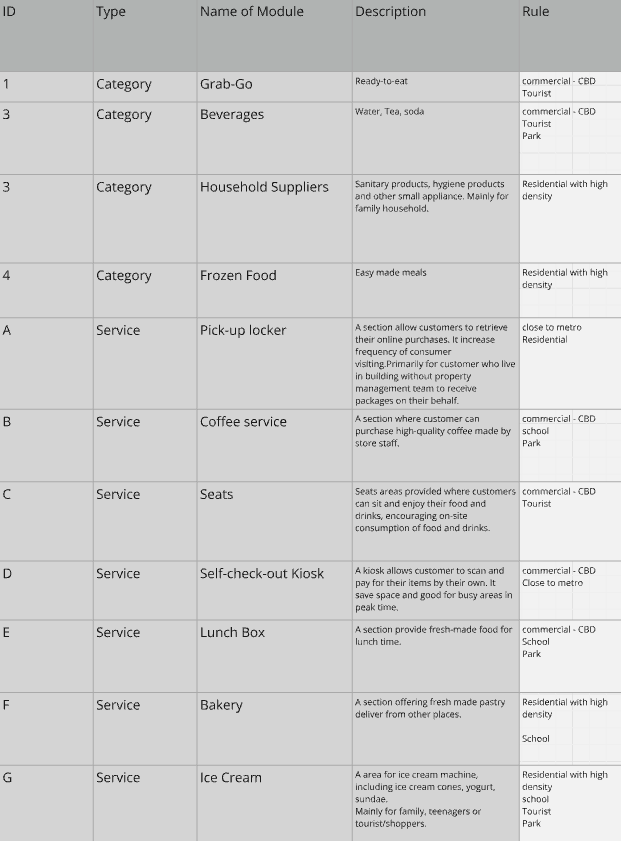
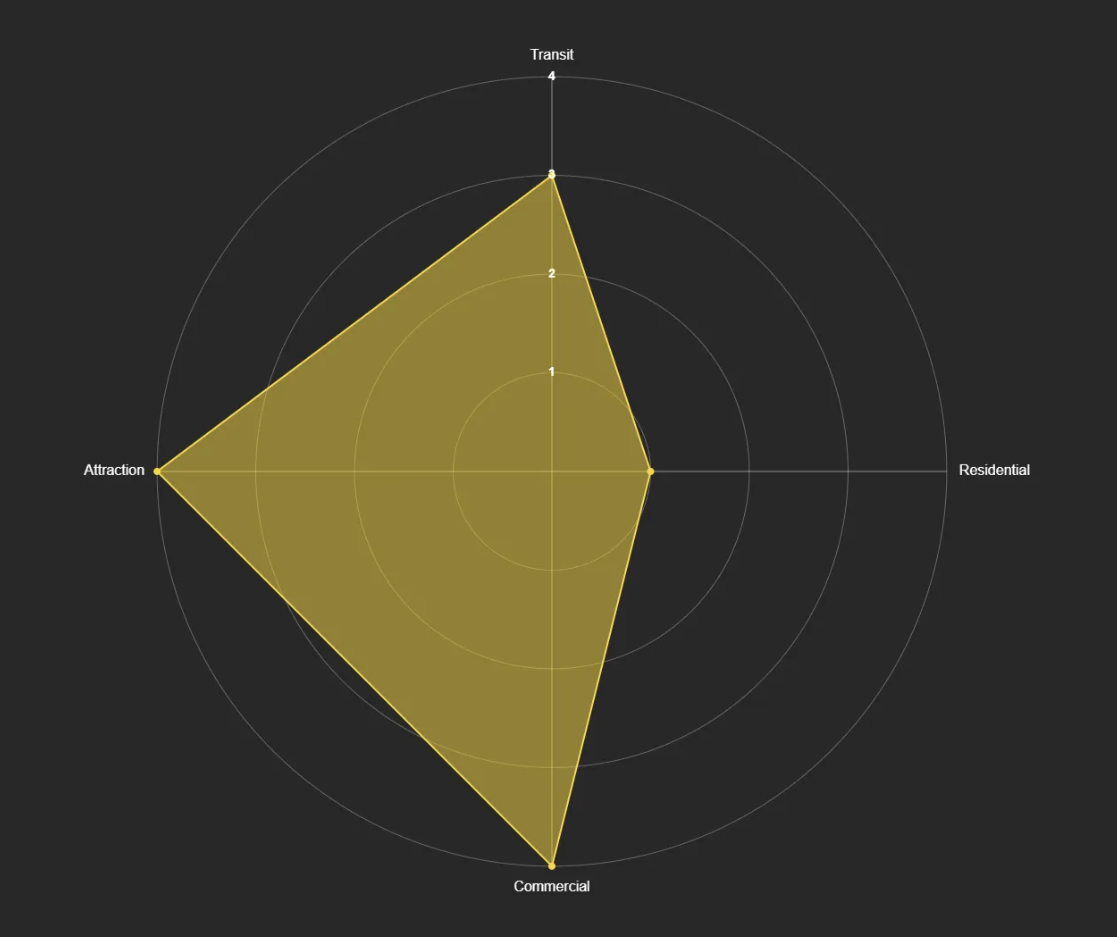
2. Layout Automation
2.1 Floor Plan Generation: Based on the data matrix, the tool generates an optimal layout for each franchise location, considering perimeter size, adjacency rules, and traffic flow within the store.2.2 Corridor & Shelf Details: The layout incorporates shelf dimensions, corridor widths, and positioning to maximize space efficiency and optimize product/service placement.
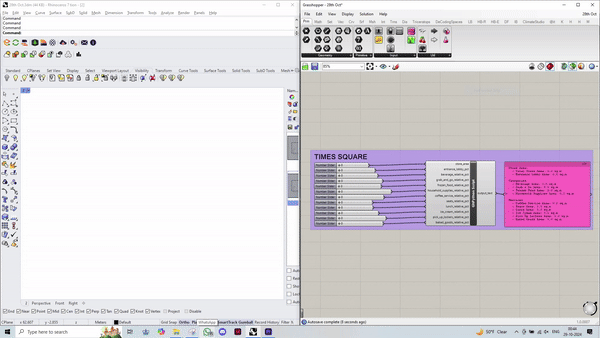
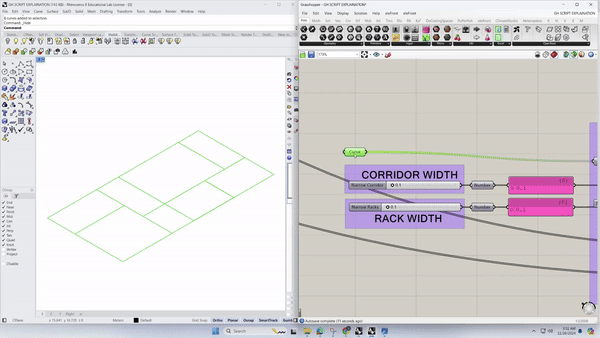
Solution Design
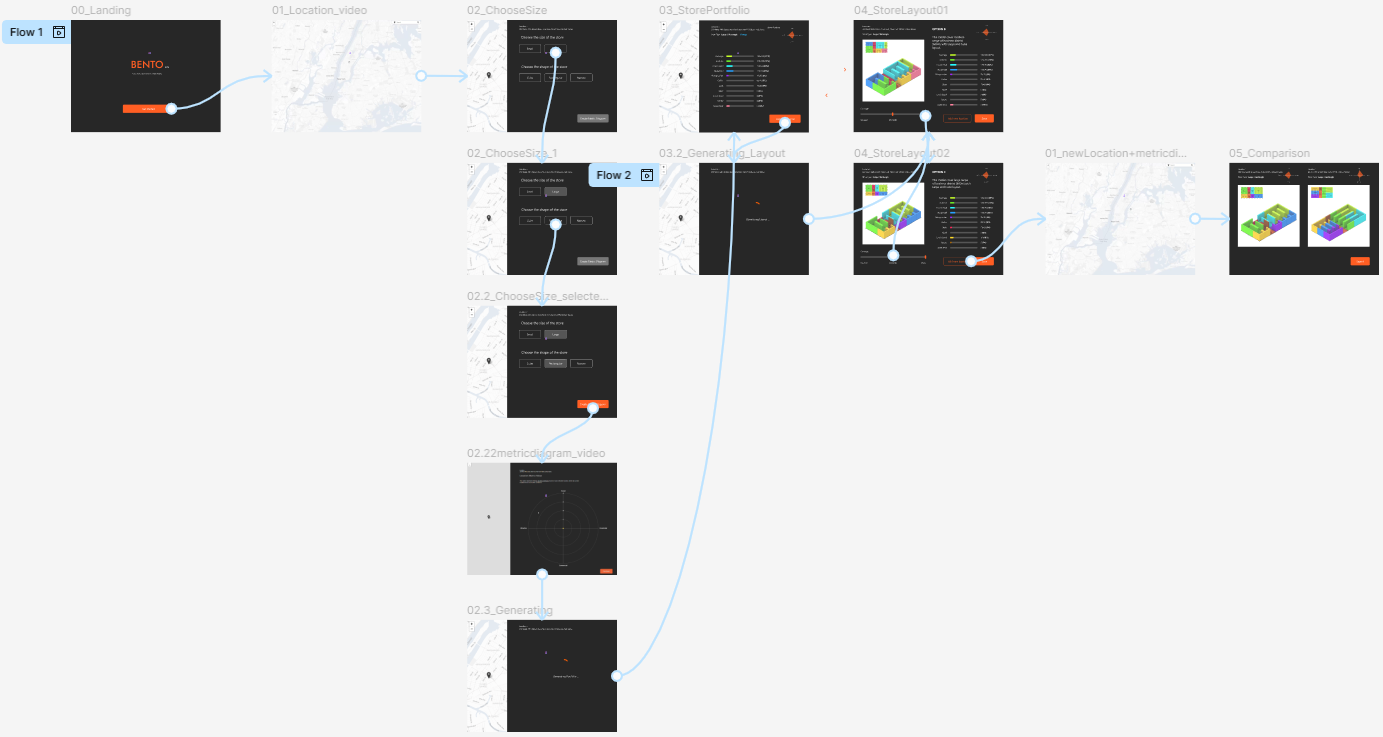
The design focused on creating an intuitive and visually appealing interface that ensures the user feels confident when making decisions about their store layout.
Example Use-Case
The final interface offers users intuitive controls to select the store location, size, and shape while providing necessary information and summaries for the layout recommendations. This ensures users are well-informed about layout specifications and area coverage, helping them to make confident, informed decisions when determining a store’s portfolio.